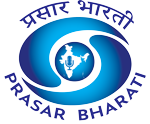Prime Minister Narendra Modi on Thursday called upon global investors to participate in India’s maritime growth story, describing the country as the “perfect harbour” for investment in the maritime sector. Sharing his vision for India’s maritime renaissance in a detailed LinkedIn post, the Prime Minister highlighted India’s strategic advantages, modern infrastructure, and commitment to innovation that together position the nation as a global hub for shipping, logistics, and port-led development.
“India is the perfect harbour when it comes to investing in the maritime sector. We have a very long coastline. We have world-class ports. We have infrastructure, innovation, and intent. Come, invest in India!” the Prime Minister wrote, urging international partners to join India’s expanding maritime ecosystem.
The message followed PM Modi’s participation in the Maritime Leaders Conclave in Mumbai, held as part of India Maritime Week 2025, where he interacted with top CEOs and stakeholders from the global maritime industry.
Reflecting on India’s rich maritime past, the Prime Minister noted that the nation’s heritage—shaped by the naval strength and trading acumen of the Cholas and Marathas—has long demonstrated how the seas can serve as “bridges of opportunity.” However, he pointed out that when his government took office a decade ago, the maritime sector was constrained by outdated regulations and limited capacity.
“Through infrastructure upgrades, policy reforms, and public participation, India’s maritime sector has been transformed into a symbol of modern infrastructure, global trust, and national pride,” PM Modi said.
The Prime Minister detailed the sector’s progress over the past decade: port capacity has doubled from 1,400 to 2,762 MMTPA; cargo handling has risen from 972 to 1,594 MMT, including 855 MMT in FY 2024–25; vessel turnaround time has been cut nearly in half—from 93 hours to 48 hours; and the net surplus of major ports has increased ninefold to ₹9,352 crore, while the operating ratio has improved from 73% to 43%.
India has also emerged as a major supplier of maritime professionals. The country’s seafarer workforce has grown from 1.25 lakh to over 3 lakh, now representing 12% of the global seafaring community.
India’s maritime growth now extends beyond coastal operations to inland waterways and shipping.
Indian-flagged vessels have increased from 1,205 to 1,549, with fleet gross tonnage rising to 13.52 MGT; coastal cargo volumes have nearly doubled, and inland waterway cargo has surged by 710%, from 18 MMT in 2014 to 146 MMT in 2025; and the number of operational waterways has grown from 3 to 32, and ferry and Ro-Pax services carried over 7.5 crore passengers in 2024–25.
PM Modi highlighted the government’s strong emphasis on sustainability and innovation in the maritime sector, citing several landmark projects that exemplify this vision. He mentioned the Vizhinjam Port, which has become India’s first deep-water transshipment hub; the Kandla Port, now home to the nation’s first green hydrogen facility; and the Jawaharlal Nehru Port Trust (JNPT), which has doubled its capacity while attracting record levels of foreign direct investment. He also referred to the Vadhvan Port project in Maharashtra, an ambitious ₹76,000 crore initiative that will be among the world’s few 20-meter deep-draft ports. With its seamless connectivity to the Delhi–Mumbai Expressway and the Western Freight Corridor, the project is expected to transform the region’s logistics and trade landscape.
Highlighting the government’s “Reform, Perform, Transform” agenda, the Prime Minister said five landmark legislations – including the Indian Ports Bill (2025) and the Bills of Lading Bill – have modernized governance, simplified trade, and aligned India’s maritime framework with global standards.
To accelerate growth, a ₹70,000 crore umbrella package has been approved for the sector, alongside initiatives such as the Shipbuilding Assistance Scheme, Maritime Development Fund, and Shipbuilding Development Scheme, expected to mobilize ₹4.5 lakh crore in investment and support the production of over 2,500 vessels.
Inviting investors to partner in India’s maritime journey, PM Modi said, “We have strategic global trade routes, world-class ports, and an ambitious vision for Blue Economy growth. Thanks to our youth, our ecosystem is primed for innovation.”
Concluding his message, the Prime Minister reiterated his call to the global maritime community, “Come aboard. Come, invest in India. Together, let’s shape the future of the world’s oceans and trade.”














